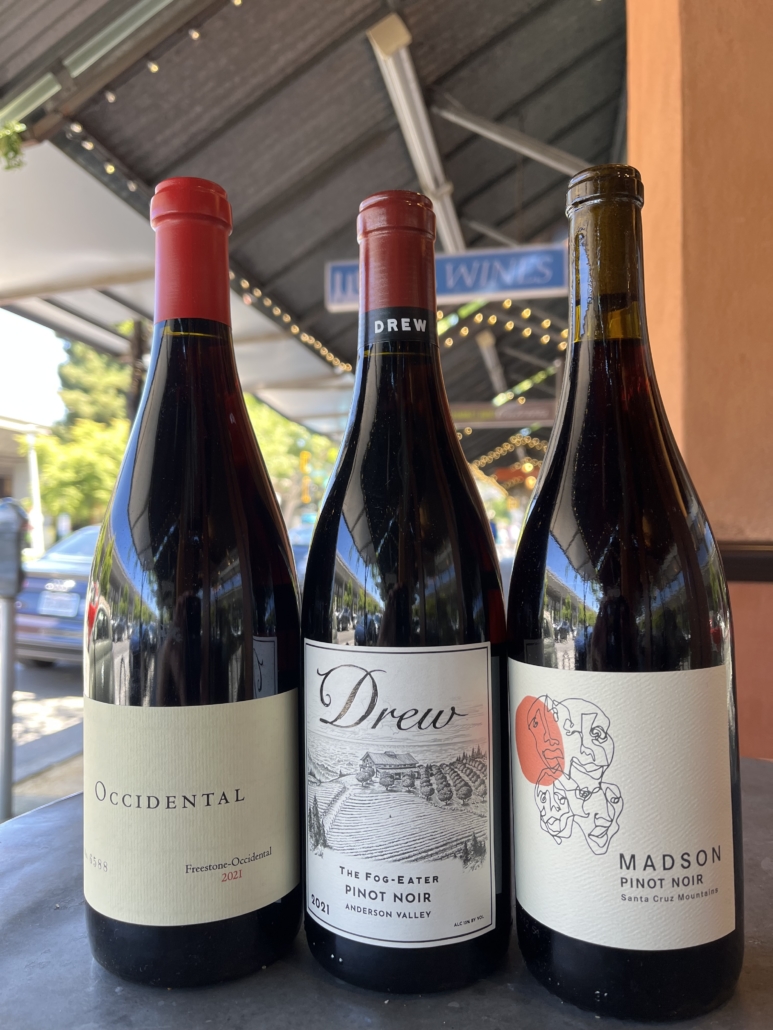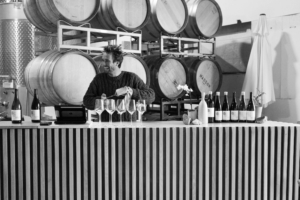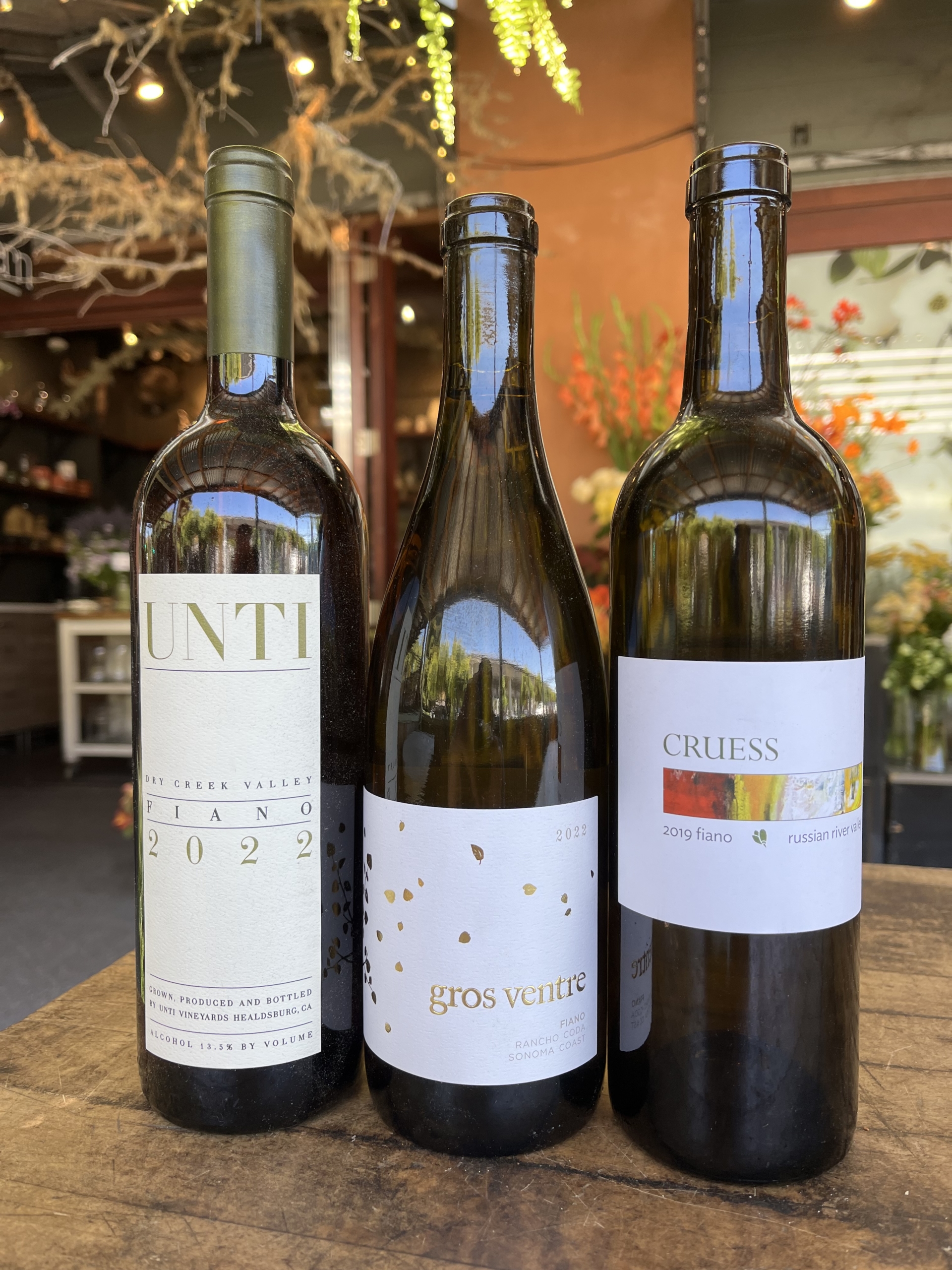An Exploration of California Wine Country With Chad Arnold
Day One
Bright sunlight over an endless vista of curling vines. Bright sunlight that lights further rays which in their turn light other fields of vision. So begins the day. For me, most days begin with doughnuts and questions, and not always in that order! Today’s doughnut was a chocolate stuffed oval with multi-colored jimmies on top. Today’s question was, “Why should we drink California wine?” George Mallory would quip, “Because it’s there.” But I would add, “Because it’s here.”
Last month, two dear deer-hunting friends of mine were married! In addition to reading a 39-page poem composed of 365 couplets of anoximetric bore-o-meter, I was asked to select the wines for the festivities. We drank both New World wines and European wines. Because they were married in Yountville, and because they love great wine, it seemed more than logical to serve some fine California juice.
So, today’s easy question of why we should drink California wine has many equally easy answers: because we were all there and because so much of it is so good! And because so much of it is so good, much of it will likely provide pleasure!
What are some of the other reasons? Terrific climate, microclimates, and diverse soil types. A range of altitudes and a range of attitudes from hundreds of talented winemakers. Varietal diversity and perhaps most importantly, exciting experimentation in the vineyards and wineries. But are there even more reasons to drink California wines? Sure. Full flavor, incredible richness, and a hefty alcohol content help. We could drink California wines “for political reasons,” or “to support the local economy,” or “because a friend made it, and I got it for free.” More good reasons methinks.
Still Growing
California winemaking is comparatively young, and in such a stage of development there is great excitement and great potential. Furthermore, because we often toast to the future, we should toast to the future of California by drinking the wonderful wines from diverse regions throughout the state! These seem like good reasons to me! How about you?
At the signing of the Declaration of Independence, the notables drank Madeira. However, they were to some vinous extent saying, “Viva Vitis Labrusca!” They soon realized the error of that way [Vitis labrusca is a native American grape species that has been all but replaced by the European species Vitis vinifera for winegrowing. -Ed.] but have never stopped trying new things or ways of doing old practiced things! Thank the gods for open-mindedness and free expression – not to mention fine soils and sunlight!
But let’s not avoid the truly great wines made here because there may be better wines made elsewhere. Great wines are made all over the world. For example if you were to pick one wine (say the Romanée St. Vivant from the Domaine de la Romanée Conti) as the only wine you would ever drink again, you would, I dare say, but will say, be shortchanging yourself of so much great wine. Ugh! What an awful thing to do to such a sublime wine. So, drink as much different quality wine as you can.
For example if you find yourself in a small town in France, say Montlouis, you might be lucky enough to happen upon François Chidaine, who makes a number of incredible Chenin Blancs that are very inexpensive. Furthermore, Chenin Blanc is not something most people would likely pick off the shelf at their local market without threats or assistance. But when in Rome (or Montlouis!) drink the local wines with the same relish that you enjoy the local cuisine. I think it is a policy worth exploring. Sound good?
While not drinking a particular wine is a legitimate un-engagement (assuming you have actually tasted it) of that wine, it is a much more tenuous position to dismiss an entire region or country or hemisphere. Furthermore, it is easier to dismiss something than it is to endorse it. So: There is a distinct relationship between how much you know and how much you like. Lesson: Like a lot and like it alot!
Day Two
On day 2 of what will be a long and rich marriage, I was asked to “make some calls” as the “wine guy” so that the remaining guests might go wine tasting. Clearly they wanted more wine. Poetry, even in its highest expressions, takes a rumble seat to alcohol. So, I made my first call. The winery I called said they would love to help us, though we weren’t asking for help, per say, but they were just too busy (selling wine I guess) to accommodate a group of a dozen or so genial folks with canes and sunglasses. Not an atypical response in my experience.
The second call met with a genial, professional voice. The call was to Miner Family Vineyards, and a gentleman named Villamor Zapata answered and said “Good morning, Miner Family Vineyards, can I help you?” I immediately apologized for my long and digressive poem (not remembering that the gentleman to whom I was speaking was not at the ceremony.) Anyway he paused, I imagine politely, and continued saying that they, too were busy, but that we could come by and taste some wines of our choice if I promised not to bring a copy of the poem. I should say at this point that Paul Marcus Wines sells wines from Miner Family Vineyards from time to time.
Well, we were well escorted through the fancily dressed crowds to a private, sun-lit balcony overlooking the vined valley. Rows of Reidel glasses were on the table. And then the bottles! Rows of them too! We drank the following wines in the following order and re-tasted them in another and then another:
1) 2001 Sauvignon Blanc
20% neutral oak, 80% stainless steel.
539 cases produced.
What a wine! No kidding, a Napa Sauvignon Blanc with nerve and richness, not oaky richness but richness from fruit picked at the perfect time. For those of you who are unsure about S.B., give this beauty a whirl or a swirl!
2) 1999 Oakville Ranch Chardonnay
90% new French oak, spending 10 months in those very barrels.
683 cases produced.
With so much oak, you might be expecting a clumsy, typical Napa Valley Chardonnay. But no. It was quite rich but not lacking in acid. To liken this to a Meursault would be silly; it may remind you of a wine from that town, but this was a Napa Chardonnay, which is one of the reasons it was so good. It was geographically accurate. For example, only wines from Corton Charlemagne remind me of wines from Corton Charlemagne. It should be this way.
3) 1999 “Wild Yeast” Chardonnay
100% Malolactic Fermentation, 100% Barrel Fermented.
14 months in new oak, 75% of it new. Total Acidity .60.
Wow! This was a world class Chardonnay! Rich and harmonious. Complex without being complicated. A complicated wine demands the sipper or swiller to force connections between ultimately discordant elements like oak and fruit. A complex wine shows with great beauty how these elements can come together for the taster. It takes the right understanding of the land and winemaking talent to end up with a great, complex glass of wine. Remember, there are only two kinds of wine in the whole world: Indoor & Outdoor. Sorry for the digression (this was part of the poem). Back to the wine in hand: an utterly fantastic Chardonnay! Available at Paul Marcus Wines for $50.00, it’s expensive but well worth it!
4) 1999 “Stagecoach” Merlot
95% Merlot, 5% Cabernet Sauvignon.
20 months 80% new French oak, 20% new American oak.
Yes, there is a lot of new wood, but only because there is so much fruit. Balance, baby. This is a sensual, seductive wine that reminds me of an estate in Pomerol. But to its credit it is clearly from Napa. No kidding. Great varietal definition and length. Superlatives are often overused and often overextend the virtues of the wine itself. It is not the idea of the thing but the thing itself. So drink this wine!
5) 1998 “Oakville Ranch” Merlot
75% merlot, 25% Cabernet Sauvignon.
20 months new oak, a mix of French and American.
This is a big boy. Or big girl. Whichever. This wine needs time to harmonize, but it’s all there. The marriage of great fruit, prime vineyard sites, and aesthetic insight is evident here. But it will be few years before the wood and grape tannins become integrated, and then the good times will roll. I would wait about 5 years to enjoy this fully. And then I would have a few extra bottles around to further the discussion of art and life! (Or at least the next bottle!)
These excellent wines were accentuated by being enjoyed in the Napa Valley, by being in the sun, hell, by the odd circles of birds. It was, however, the company and the conversation (which was not limited to wine!) that gave us the ability to fully appreciate the wines and gave the wines, I think, a fine venue! As birds to a cluster of perfectly ripe Chardonnay, we did continually circle back to the wines themselves.
Because art like love cannot exist in a vacuum and because these wines were art, they were lovely. And because we had walked through the vineyards and felt the sunlight and smelled the air that went into the grapes and into our glasses and into our bodies, we had come perhaps to a better understanding of what it means to enjoy the good life. Perhaps this is yet another aspect of terroir? Nice to think it is.



 Yet, if you’re set on trying something different, you should try fiano. The fiano grape (fee-ah-no) is native to southern Italy, with Campania being the epicenter. The story goes like this: Romans named it Apianum, “loved by bees,” and bees aren’t dumb. Fiano tends towards small berries and intense but not plentiful juice. The smaller quantity means that quality needs to be high to justify the labor.
Yet, if you’re set on trying something different, you should try fiano. The fiano grape (fee-ah-no) is native to southern Italy, with Campania being the epicenter. The story goes like this: Romans named it Apianum, “loved by bees,” and bees aren’t dumb. Fiano tends towards small berries and intense but not plentiful juice. The smaller quantity means that quality needs to be high to justify the labor.